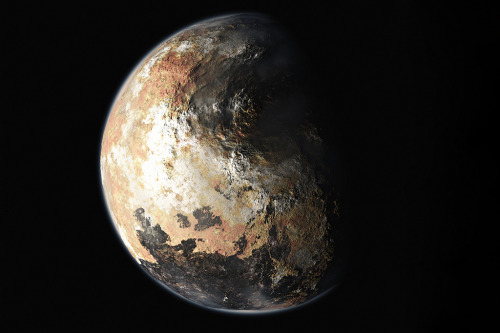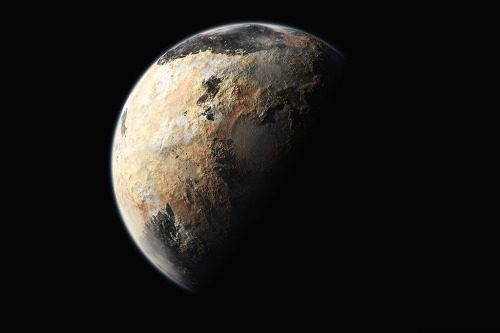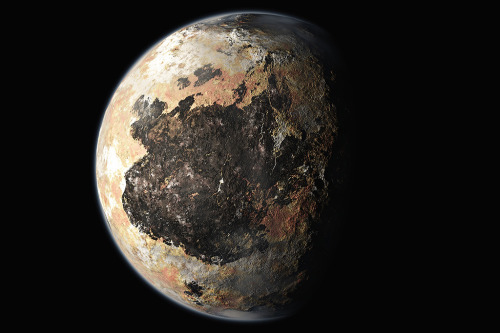Littlecadet-biguniverse - Space, Our Favorite Frontier!!

More Posts from Littlecadet-biguniverse and Others

NGC 1275 Multi-Wavelength
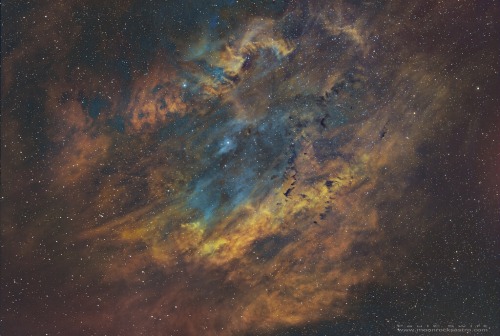
Sh2-119 Sharpless 119,emission nebular in Narrowband by Paul C. Swift on Flickr.

NGC 7129, Young Stars
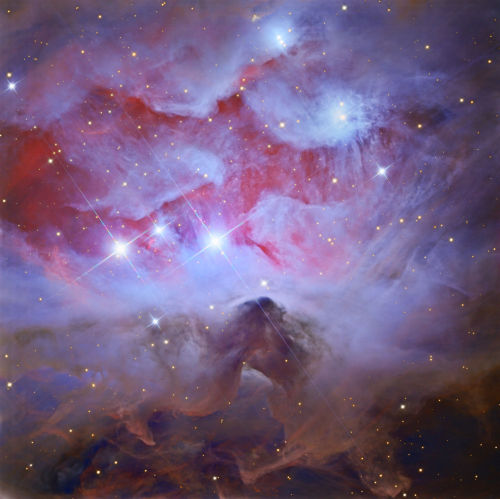
Running Man Nebula
js


Location: Hawaiian Island of Maui Photo: Jeff Berkes

This beautiful supernova remnant is the product of a huge stellar explosion in our neighboring galaxy — the Small Magellanic Cloud (📷 : NASA)


Jupiter’s North Pole Unlike Anything Encountered in Solar System
NASA’s Juno spacecraft has sent back the first-ever images of Jupiter’s north pole, taken during the spacecraft’s first flyby of the planet with its instruments switched on. The images show storm systems and weather activity unlike anything previously seen on any of our solar system’s gas-giant planets. “First glimpse of Jupiter’s north pole, and it looks like nothing we have seen or imagined before,” said Scott Bolton, principal investigator of Juno from the Southwest Research Institute in San Antonio. “It’s bluer in color up there than other parts of the planet, and there are a lot of storms. There is no sign of the latitudinal bands or zone and belts that we are used to – this image is hardly recognizable as Jupiter. We’re seeing signs that the clouds have shadows, possibly indicating that the clouds are at a higher altitude than other features.”
Credit: NASA/JPL-Caltech/SwRI/MSSS


MARTIAN STORMS - Seen in 1977 by the Viking 2 Orbiter
“Like its predecessor, the Viking 2 mission consisted of a lander and an orbiter designed to take high-resolution images, and study the Martian surface and atmosphere. Both the Viking 1 and 2 landers benefited greatly from their orbiting counterparts, which snapped images that helped mission controllers navigate the landers to safe landing sites.”
This particular image was taken by the Viking 2 Orbiter and shows a massive dust storm on the red planet. This spectacular storm can be seen on a global scale. The Viking 2 mission would end 3 years later on April 11, 1980.
Credit: NASA/JPL
-
 talkativetrex liked this · 7 years ago
talkativetrex liked this · 7 years ago -
 whocouldeverleavemedarlin liked this · 8 years ago
whocouldeverleavemedarlin liked this · 8 years ago -
 tafuck123 liked this · 8 years ago
tafuck123 liked this · 8 years ago -
 hallelboo reblogged this · 8 years ago
hallelboo reblogged this · 8 years ago -
 synthwave-unicorn reblogged this · 8 years ago
synthwave-unicorn reblogged this · 8 years ago -
 violetdreamspoetic-nights liked this · 8 years ago
violetdreamspoetic-nights liked this · 8 years ago -
 dontbelieveinmodernlove reblogged this · 8 years ago
dontbelieveinmodernlove reblogged this · 8 years ago -
 dontbelieveinmodernlove liked this · 8 years ago
dontbelieveinmodernlove liked this · 8 years ago -
 tuukks reblogged this · 8 years ago
tuukks reblogged this · 8 years ago -
 littlecadet-biguniverse reblogged this · 8 years ago
littlecadet-biguniverse reblogged this · 8 years ago -
 ostentatiousrrex liked this · 8 years ago
ostentatiousrrex liked this · 8 years ago -
 nebelung-dragon liked this · 8 years ago
nebelung-dragon liked this · 8 years ago -
 synthwave-unicorn reblogged this · 8 years ago
synthwave-unicorn reblogged this · 8 years ago -
 tenigam reblogged this · 8 years ago
tenigam reblogged this · 8 years ago -
 tenigam liked this · 8 years ago
tenigam liked this · 8 years ago -
 c17h17ncl2 liked this · 8 years ago
c17h17ncl2 liked this · 8 years ago -
 kaockarelflowers reblogged this · 8 years ago
kaockarelflowers reblogged this · 8 years ago -
 moonyrocks liked this · 8 years ago
moonyrocks liked this · 8 years ago -
 caviriot liked this · 8 years ago
caviriot liked this · 8 years ago -
 her-oblivion reblogged this · 8 years ago
her-oblivion reblogged this · 8 years ago -
 goodbye-facebook liked this · 8 years ago
goodbye-facebook liked this · 8 years ago -
 mindfilledwithgalaxies liked this · 8 years ago
mindfilledwithgalaxies liked this · 8 years ago -
 suchaviolenthigh reblogged this · 8 years ago
suchaviolenthigh reblogged this · 8 years ago -
 magont reblogged this · 8 years ago
magont reblogged this · 8 years ago -
 musictomytradegy-blog liked this · 8 years ago
musictomytradegy-blog liked this · 8 years ago -
 nervousstrangersandwich liked this · 9 years ago
nervousstrangersandwich liked this · 9 years ago -
 moth-shmo reblogged this · 9 years ago
moth-shmo reblogged this · 9 years ago -
 moth-shmo liked this · 9 years ago
moth-shmo liked this · 9 years ago -
 a-wanderer-rambler-and-drifter reblogged this · 9 years ago
a-wanderer-rambler-and-drifter reblogged this · 9 years ago -
 490531168 liked this · 9 years ago
490531168 liked this · 9 years ago -
 eyes-to-the-skies liked this · 9 years ago
eyes-to-the-skies liked this · 9 years ago -
 emilyk-- liked this · 9 years ago
emilyk-- liked this · 9 years ago -
 ancyd liked this · 9 years ago
ancyd liked this · 9 years ago -
 338934-blog liked this · 9 years ago
338934-blog liked this · 9 years ago -
 azamor reblogged this · 9 years ago
azamor reblogged this · 9 years ago -
 liminalanarchy liked this · 9 years ago
liminalanarchy liked this · 9 years ago -
 blogmariagorete liked this · 9 years ago
blogmariagorete liked this · 9 years ago
GREETINGS FROM EARTH! Welcome to my space blog! Let's explore the stars together!!!
144 posts
